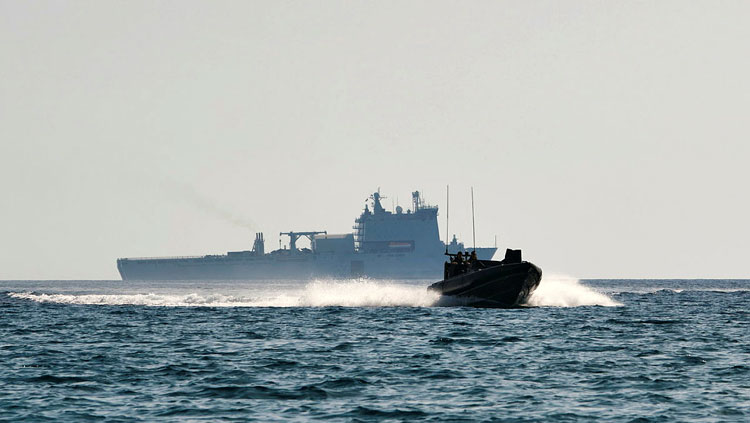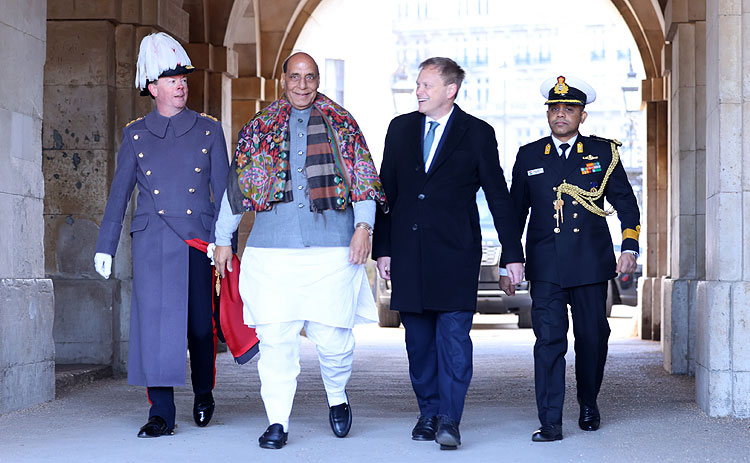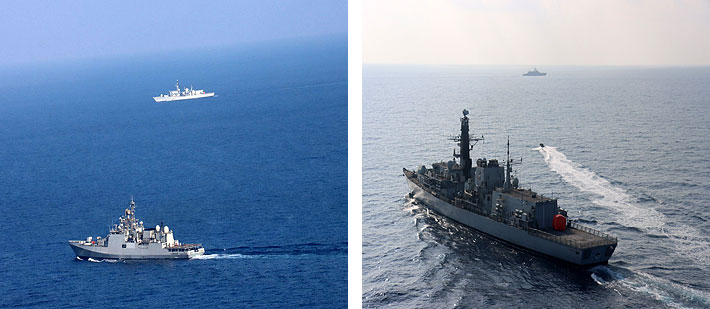INDIAN ARMED FORCES CHIEFS ON OUR RELENTLESS AND FOCUSED PUBLISHING EFFORTS

The insightful articles, inspiring narrations and analytical perspectives presented by the Editorial Team, establish an alluring connect with the reader. My compliments and best wishes to SP Guide Publications.

"Over the past 60 years, the growth of SP Guide Publications has mirrored the rising stature of Indian Navy. Its well-researched and informative magazines on Defence and Aerospace sector have served to shape an educated opinion of our military personnel, policy makers and the public alike. I wish SP's Publication team continued success, fair winds and following seas in all future endeavour!"

Since, its inception in 1964, SP Guide Publications has consistently demonstrated commitment to high-quality journalism in the aerospace and defence sectors, earning a well-deserved reputation as Asia's largest media house in this domain. I wish SP Guide Publications continued success in its pursuit of excellence.
- MoD initiates comprehensive review of Defence Acquisition Procedure 2020, pushes for defence reforms
- G7: The Swansong
- Kalinga Connect: South Asia to Polynesia
- Advanced MRSAM for India for a greater firepower
- Must Credit DRDO for Operation Sindoor, now what is next for defence R&D?
- Operation Sindoor | Day 2 DGMOs Briefing
- Operation Sindoor: Resolute yet Restrained
India-UK Maritime Cooperation
Charting a course for Indo-Pacific security, UK's Littoral Response Group and Carrier Strike Group will visit the region in the near future
 |
The Author is Former Director General of Information Systems and A Special Forces Veteran, Indian Army |

The United Kingdom will be sending its Littoral Response Group (LRG) to the Indian Ocean Region (IOR) in the current year. A Littoral Response Group is a Royal Navy task group consisting of at least two amphibious warfare ships, a company of Royal Marines, and supporting elements. The LRG is primarily tasked with amphibious warfare from the inshore areas, the coastal zones where land and sea meet. The LRG is part of a broader initiative to adapt the UK's amphibious forces to operate more dispersed and agilely.

In 2025, the UK will be sending its spearhead Carrier Strike Group (CSG) for conducting joint maritime exercises with the Indian Navy. The British CSG is NATO's first fifth-generation carrier strike capability. According to reports, it is the sword arm of the UK's joint expeditionary capability and a cornerstone of the UK's conventional military deterrent. The CSG can move, act, and fight as an integrated and cohesive force, even across thousands of miles. Also, individual ships can detach from the leading group to conduct independent or concurrent tasks as required. In 2021, the British CSG was deployed when it undertook a port visit to India, apart from Singapore, Korea, and Japan.
The UK's Littoral Response Group (LRG) is set to deploy to the Indian Ocean Region in 2024
With increasing footprints and aggressive stance of China, the British naval forces are also gearing towards the Indo-Pacific Region. Deepening of defence cooperation with India, therefore, is the natural process. Deployment of the Britain's LRG to the IOR in 2024 and naval exercises of the British CSG with the Indian Navy in 2025 was the outcome of Defence Minister Rajnath Singh's visit to the UK on January 9-10, 2024 and discussion with Britain's Defence Secretary Grant Shapps on January 9. Notably, this was the first visit to the UK by an Indian Defence Minister in over 20 years.

Rajnath and Shapps discussed a range of defence, security, and cooperation matters with particular emphasis on enhancing defence industrial collaboration. Shapps stressed that "the relationship between the UK and India is not transactional. Instead, both countries are natural partners with many commonalities and shared goals." Rajnath Singh appreciated the growing strategic convergence between the two countries, particularly in the Indo-Pacific.
In 2025, the UK's Carrier Strike Group (CSG), NATO's first fifth-generation carrier strike capability, will conduct joint maritime exercises with the Indian Navy
The bilateral defence meeting was followed by the signing of two agreements between India and the UK:
- a Memorandum of Understanding (MoU) on the conduct of a bilateral international cadet exchange programme;
- a Letter of Arrangement (LoA) between the Defence Research and Development Organisation (DRDO) and the UK's Defence Science and Technology Laboratory (DSTL) on defence collaboration in research and development.
A statement issued by the Indian side said, "These documents will provide impetus to the people-to-people exchanges, particularly among the youth, and a larger area of defence research collaboration between the two countries."


Shapps announced the UK's plans to send its LRG to the IOR later this year and the CSG to visit India in 2025 for training and operating with Indian forces. Both sides also discussed future defence cooperation, from joint exercises to knowledge sharing and instructor exchanges. The British statement said these steps build on the comprehensive strategic partnership envisaged in the 2030 India-UK roadmap, announced in 2021. In the coming years, the UK and India will also embark on more complex exercises between their respective militaries, building up to a landmark joint exercise to be conducted before the end of 2030, supporting shared goals of protecting critical trade routes and upholding the international rules-based system."
The deployment of the LRG and the naval exercises of the CSG in the Indo-Pacific are outcomes of discussions between India's Defence Minister Rajnath Singh and Britain's Defence Secretary Grant Shapps
Shapps said: "There is absolutely no question that the world is becoming increasingly contested, so it's vital that we continue to build on our strategic relationships with key partners like India. Together, we share the same security challenges and are steadfast in our commitment to maintaining a free and prosperous Indo-Pacific. Clearly, this relationship is going from strength to strength, but we must continue to work hand-in-hand to uphold global security in light of threats and challenges that seek to destabilise and damage us."


Shapps further said, "Collaboration with industry is also key in the strategic defence partnership between the UK and India, with the two nations working together on electric propulsion systems that will power our future fleets and cooperating on developing complex weapons. The international rules-based system and the global security in light of threats and challenges that seek to destabilise and damage us are all euphemisms for the international concerns over China's aggressive military modernisation and territorial contestations with its neighbors, be it India or those littorals in East China and South China Seas."
The bilateral defence meeting resulted in a Letter of Arrangement (LoA) between India's DRDO and the UK's DSTL on defence collaboration in research and development
Building on the existing strategic partnership, during the visit, the UK and India also confirmed several new joint initiatives: The launching of the Defense Partnership-India, designed to further defence collaboration between the two countries; a commitment to several instructor exchanges between officer training colleges and specialist schools, alongside the signing of a youth exchange MoU to further strengthen relations between cadet organisations.
Both sides further strengthened the agreement on logistics exchange, allowing for the provision of logistic support, supplies, and services between the United Kingdom and Indian Armed Forces for joint training, joint exercises, authorised port visits, and Humanitarian Assistance and Disaster Relief (HADR) operations. India has similar logistics exchange arrangements with several other nations, including the US, Australia, Japan, Singapore, South Korea and the US.
The electric propulsion from the UK is under consideration for India's indigenous aircraft carriers of the future, including the second IAC (IAC-II) which is likely to be christened INS 'Vishal'.





